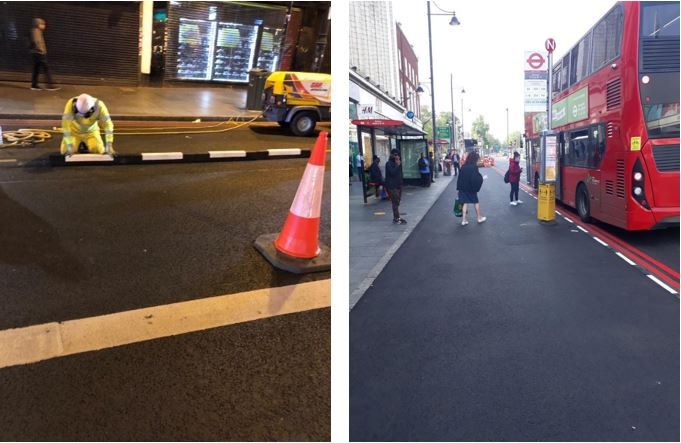Regional & local government / Healthy Cities
How-to guide to help councils reshape cities and create ‘life-saving’ streets
By Andrew Sansom | 18 May 2020 | 0
The UK’s Urban Design Group has published a how-to guide on how to make urgent changes to the design of town and city streets to help address not only the COVID-19 crisis but also the issues of air quality, obesity, wellbeing, and climate change.
The ‘Fast urban change for life-saving streets – how-to guide’ outlines the duties of local authorities in securing the safety of pedestrians and cyclists, and the actions that can be taken quickly to provide that safety and without timewasting and expensive bureaucracy.
People who can’t work from home are being encouraged to return but without using public transport; the restriction on the amount of outdoor exercise people can take has been lifted, and businesses are beginning to reopen. This, acknowledges the Urban Design Group, will put streets and spaces under huge and immediate pressure.
The guide considers how to create space for movement, work, leisure, children, neighbourliness, and green spaces.
Space for movement – Social distancing requirements mean that public transport systems will be running at around a tenth of their capacity, leaving millions of journeys a day needing to be made by other means. The UDG warns that if people switch only a fraction of these journeys to cars, towns and cities will grind to a halt, air quality will deteriorate, and road danger will increase. Walking and cycling need to be made the easiest and most safe ways to get about, it says.
Space for work and space for leisure – Space needs to be used in a way that is best for people, society, and the environment – with a view to strengthening our economies, biodiversity, health and community, says the UDG. Space outside shops, cafes, restaurants, and bars will enable the economy to be unlocked, and people to safely come together, it suggests.
Space for children and space for neighbourliness – Residential streets, says the UDG, need to be kept as places where children can learn to ride a bike or play together, and community life can flourish.
Green space for health and happiness – The UDG wants a safe and attractive network of walking and cycling routes to be created and connected to green spaces as a matter of social justice for all.
Looking beyond the pandemic
Robert Huxford, director of the Urban Design Group, said: “Local authorities have a massive challenge ahead and little resource to meet it, but the changes made now will help to avert the dangers that lie beyond the present crisis: air pollution, poor physical and mental health from sedentary lifestyles, and climate change.” 
Christopher Martin, director, urban movement, of the Urban Design Group Exec Committee, said: “The way we shape our towns and cities is directly linked to our success, health and happiness. For too long we’ve allowed towns and cities to service commodities but not society. We need to learn from this trauma and focus on using the space we have to allow people and society to flourish.
“We need to act fast to protect our cities. We need to be (re)active to break bad habits and find gracious solutions to the challenges we face that allow people to do what they need to do while living life and supporting others.”
He continued: “On the ground, we need to actively enable and invite people to walk and cycle because that helps others and supports society. We need to actively discourage people from driving into cities if they don’t have to because this harms others. So we take space from vehicles – protecting space for essential trips – and give it to walking and cycling in ways that add colour, life, vibrancy and joy.”
Urbanist Scott Elliott Adams, who also sits on the Urban Design Group Exec Committee, called for a bold and creative response. “Our streets can and should work to deliver economic, social and environmental benefits as people-friendly spaces,” he said. “Now is the time to act. We know what to do; we just need the will.”
He added: “Our streets are too small to accommodate significant growth in car usage, but we’re able to facilitate substantial growth in the number of people walking and cycling by temporarily re-allocating road space. We can create life-saving streets quickly, efficiently and affordably while also delivering more vibrant and friendly streets and spaces that will benefit local high streets.”
The guide reimagines Westminster Bridge with changes implemented to create additional walking space, protected cycle and bus lanes, as well as extra space for people to enjoy views, fresh air and planting – all while maintaining physical distancing rules.
An artist impression shows traffic lanes for essential vehicles are maintained, but space for non-essential traffic is given over to pedestrians and cyclists.
According to the UDG, these sorts of measures require minimal physical intervention – lines can be painted, coloured surfaces can be quickly overlaid on the existing street surfaces, and planters can be placed in position. Legal processes, says the organisation, can be completed in a week or less.
Organisations involved

